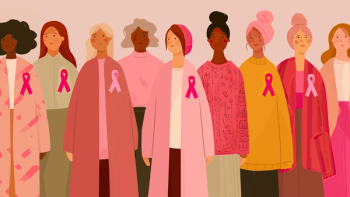
- CURE Lung Cancer Special Issue
Taking Cancer Support to a New Level
Supportive care commonly addresses physical symptoms associated with lung cancer and side effects associated with cancer therapy.
When patients are undergoing treatment for lung cancer, the expected focus is on treatment options and details. Patients and their families may be surprised when the topic of supportive or palliative care enters the conversation with their cancer team. Patients may assume that supportive or palliative care means end-of-life care, when in fact it is meant to improve a patient’s quality of life during treatment.
For example, supportive care commonly addresses physical symptoms associated with lung cancer and side effects associated with cancer therapy. These include cough, shortness of breath, pain, loss of voice and difficulty swallowing, nausea and diarrhea, among others. And palliative care often focuses on the social, emotional and financial effects of the disease to boost a patient’s well-being.
These types of care are meant for patients with lung cancer regardless of their age, the stage at which their cancer was diagnosed and the treatment they are receiving. Most guidelines from major oncology organizations, which are based on available evidence from studies, recommend the initiation of supportive and palliative care at the time a patient received a lung cancer diagnosis so symptoms can be addressed before they potentially become debilitating.
In fact, even aggressive treatment goes hand-in-hand with these types of care: Studies have shown that when such care is initiated early, patients live longer. Patients who receive it tend to have a better quality of life and outlook.
Sometimes patients with lung cancer do not start supportive or palliative care at the so-called right time because either they are not told of the benefits soon enough or there is some hesitancy by the patient to start this type of care because they are mainly focused on their cancer treatment.
With the feature in this
For more news on cancer updates, research and education, don’t forget to
Articles in this issue
over 2 years ago
Early Supportive Care Extends Life, Eases Cancer Symptomsover 2 years ago
Doing More With Less in Lung Cancer Surgeryover 2 years ago
The Way of the Future for Treating Early-Stage NSCLC



